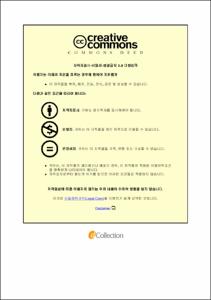뇌졸중으로 인한 반신불완전마비 환자에서 모닝워크를 이용한 보행 훈련의 효과: 무작위 다기관 시험
- Abstract
- 목적 아급성 뇌졸중 환자에서 모닝워크를 이용한 보행 훈련의 효과를 조사하고자 하였다.
방법 본 연구는 비-맹검, 무작위 대조 기법의 전향적 연구로서 2016년 12월부터 2017년 4월까지 세 병원의 재활의학과에서 시행되었다. 1년 이내에 처음 발병한 뇌졸중으로 반신불완전마비를 보이며 functional ambulation category (FAC) 점수가 2점 이상인 환자들을 대상으로 검토하여 58명의 환자를 등록하였다. 환자들은 무작위로 모닝워크군과 대조군에 배정되었고, 이 중 10명이 탈락하여 최종 분석은 48명을 대상으로 하였다. 치료는 주 5회로 3주간 시행되었고, 1회 치료시 28명의 모닝워크군은 30분의 모닝워크를 이용한 보행 훈련 및 1시간의 고식적 재활치료를, 30명의 대조군은 1시간 30분의 고식적 재활치료를 시행하였다. 일차 결과 지표는 보행 능력을 평가하기 위한 FAC 점수와 하지의 운동 기능을 평가하는 Motricity Index(MI)로 설정하였다. 또한 이차 결과 지표로 10m walk test, Modified Barthel Index, Rivermead Mobility Index, Berg Balance Scale 등을 평가하였다.
결과 양 군 모두 치료 후에 모든 결과 지표들이 유의미한 향상을 보였다. 모닝워크군은 위약이 있는 하지의 MI (p = .034) 및 BBS (p = .047)에서 대조군보다 더 큰 폭의 향상을 보였다. 모닝워크군 내에서는 초기 FAC 점수가 3 미만이었던 환자들이 초기 FAC 점수가 3 이상이었던 환자들보다 MBI (p = .011)의 향상 폭이 더 컸다.
결론 아급성 뇌졸중으로 인한 반신불완전마비 환자에서 모닝워크를 이용한 보행 훈련을 고식적 물리치료와 함께 시행할 때, 고식적 물리치료를 단독으로 시행하였을 때 보다 위약이 있는 하지의 운동 능력 및 균형 기능이 향상되었다.|Objective To investigate the effects of Morning Walk®-assisted gait training for patients with stroke.
Method This was a randomized controlled trial from December 2016 to April 2017. Three hospital rehabilitation departments (two tertiary and one secondary) participated in this study. I enrolled 58 patients with hemiparesis, following first-time stroke within the preceding year, whose functional ambulation category (FAC) scores were ≥ 2. Ten patients were excluded, leaving a cohort of 48 for final analyses. Patients were randomly assigned to one of two groups: 28 patients were treated with 30 min of Morning Walk® training plus 1 h of conventional rehabilitation program (MW group), and 30 patients received only 1.5 h of conventional rehabilitation program (control group). Both groups received treatment five times per week for 3 weeks. The primary outcome was the walking ability, assessed using the FAC scale, and lower limb function, assessed using the Motricity Index (MI)-Lower. Secondary outcomes included the 10m walk test, the Modified Barthel Index, the Rivermead Mobility Index, and the Berg Balance Scale.
Results After training, all outcome measures significantly improved in both groups. The MW group showed greater improvement in MI-affected limb (p= .034) and BBS (p= .047) than the control group. Patients with baseline FAC scores of < 3 showed significantly greater improvement than those with FAC scores of ≥ 3 on the MBI (p= .011).
Conclusion Compared with conventional rehabilitation program alone, Morning Walk®-assisted gait training combined with conventional rehabilitation program could have additional therapeutic effect in motricity of the affected limb and balance in patients with subacute stroke and hemiparesis.
- Issued Date
- 2018
- Awarded Date
- 2018-02
- Type
- Dissertation
- Keyword
- Stroke; Neurological Rehabilitation; Gait; Robotics
- Alternative Author(s)
- JaYoung Kim
- Affiliation
- 울산대학교
- Department
- 일반대학원 의학과의학전공
- Advisor
- 최경효
- Degree
- Master
- Publisher
- 울산대학교 일반대학원 의학과의학전공
- Language
- eng
- Rights
- 울산대학교 논문은 저작권에 의해 보호받습니다.
- Appears in Collections:
- Medicine > 1. Theses (Master)
- 파일 목록
-
-
Download
 200000003148.pdf
기타 데이터 / 465.09 kB / Adobe PDF
200000003148.pdf
기타 데이터 / 465.09 kB / Adobe PDF
-
Items in Repository are protected by copyright, with all rights reserved, unless otherwise indicated.